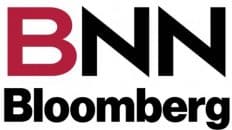This week’s puzzling questions are…What’s in a name? What’s in a number?
The buzz topic in fossil fuel today is the leak at the Keystone XL pipeline (KXL), which is the heavy crude lifeline for the U.S. refining “Megatropolis” (my word!) on the Gulf coast.
Lately I’ve been thinking the pipeline’s name should be changed from Keystone to Headstone.
In the past, a shut down like this would have caused panic attacks for the pin-striped crowds on Wall Street and spiked prices for crude and all refined products. This time, and for the time being, there is an overriding calm in short term price movements.
Why?
Because there are fall back safeguards in place today that are buffering the threat of supply shortage induced price spikes.
Firstly, and goodly (my word!), the opening of the southbound Enbridge Line 3 earlier this year has lessened pressure on the KXL. Next, President Biden continues to draw crude from the Strategic Petroleum Reserve (SPR), and this crude is chemically similar to Western Canadian Select (WCS), which is now stuck at home in Alberta.
But this isn’t a problem because there is ample spare storge capacity at home, for the time being anyway, until the pipeline mess is fixed. However, if this line is down for 10 days or more, it will increase prices of West Texas Intermediate (WTI) on one hand, which will be bad for consumers in the eastern portion of the country, and on the other hand, it will increase the discount spread between WTI and WCS, which will be bad for Alberta crude producers in the west.
On the supply/demand side, there has been a dramatic increase in the supply of crude and all refined products. The 10-million-barrel increase in crude levels were due entirely to the SPR draw. The increase in supply lowered crude prices, and when we look at demand, then prices should fall over the short term, as consumers begin to back off gasoline and jet fuel purchases because of inflation and recession fears.
One segment of the supply side of the fossil fuel industry that isn’t complaining is the refining industry. This is especially true when it comes to diesel.
As mentioned in previous reports, the normal differential between the wholesale price of diesel versus gasoline at this time of year had diesel at about 8 cents per liter (cpl) on the high side. Today that spread has rocketed to 68 cpl.
Refining margins, the difference between the cost of crude and the wholesale price of diesel, have jumped by 125% since the start of the year.
Nice game if you can play it, but it’s the consumer whose being played.
– Roger McKnight – B.Sc., Senior Petroleum Analyst








Add comment